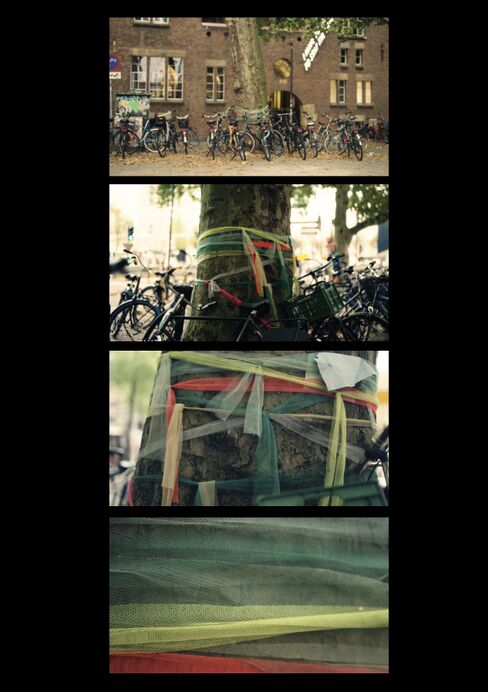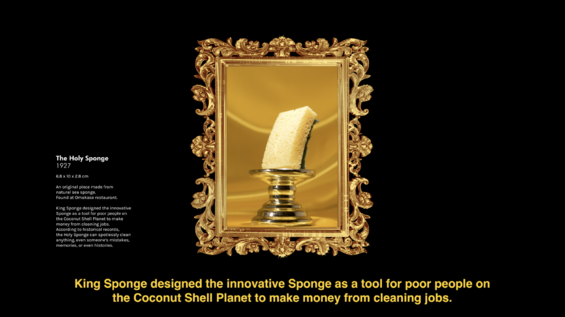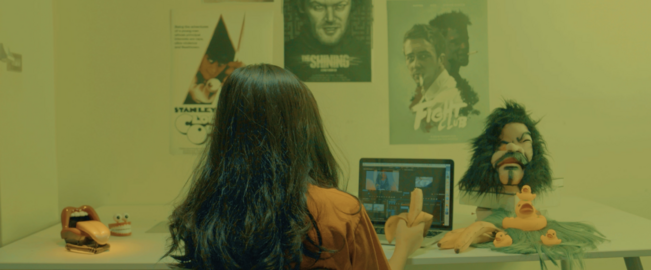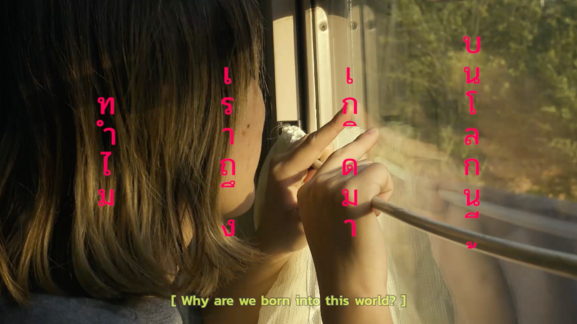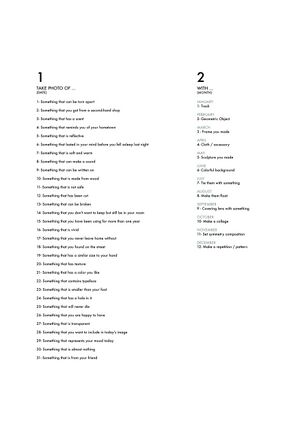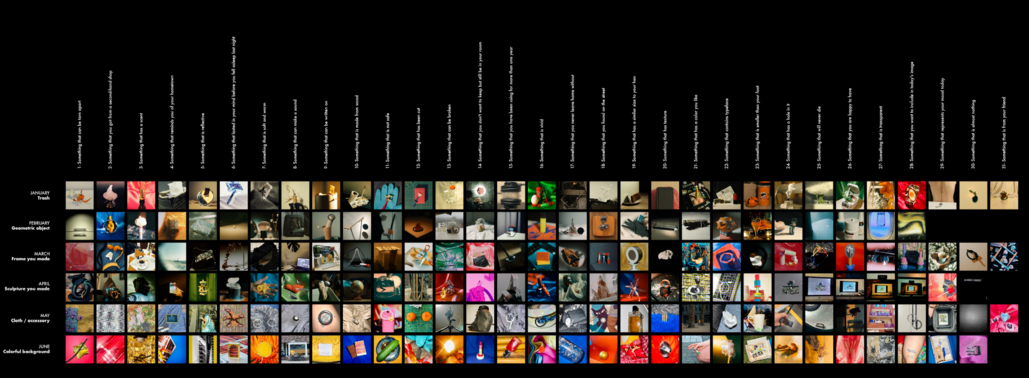Te Steve Suggests give me luck: Difference between revisions
No edit summary |
No edit summary |
||
| Line 12: | Line 12: | ||
2023-24 | 2023-24 | ||
This thesis is composed of three chapters which seek to deepen my understanding of my practice, the power of humor and mockumentary, and the political connotation behind Thailand's deep-rooted superstitious beliefs. These issues have a | This thesis is composed of three chapters which seek to deepen my understanding of my practice, the power of humor and mockumentary, and the political connotation behind Thailand's deep-rooted superstitious beliefs. These issues have a direct relation to the work I make. In ''Give Me Luck. Feed me Hope'' I investigate the role of mockumentary film through the figure of the unreliable narrator and consider how this connects to my fascination with superstitious beliefs. This is a curious fascination, because I am not superstitious in my everyday life. I want to ask: What does the audience gain from experiencing the convolution provoked by blending truth and lies? and, how can humor be a powerful tool in addressing serious social issues? | ||
'''[ <<S: please note, I have converted these questions into statements of intent]''' | '''[ <<S: please note, I have converted these questions into statements of intent]''' | ||
Revision as of 16:28, 21 November 2023
Te - Thesis Draft
GIVE ME LUCK. FEED ME HOPE
Thesis submitted to: Piet Zwart Institute, Willem de Kooning Academy, in partial fulfilment of the requirements for the final examination for the degree of: Master of Arts in Fine Art & Design: Lens-Based.
Adviser: Steve Rushton
Second Reader: **
2023-24
This thesis is composed of three chapters which seek to deepen my understanding of my practice, the power of humor and mockumentary, and the political connotation behind Thailand's deep-rooted superstitious beliefs. These issues have a direct relation to the work I make. In Give Me Luck. Feed me Hope I investigate the role of mockumentary film through the figure of the unreliable narrator and consider how this connects to my fascination with superstitious beliefs. This is a curious fascination, because I am not superstitious in my everyday life. I want to ask: What does the audience gain from experiencing the convolution provoked by blending truth and lies? and, how can humor be a powerful tool in addressing serious social issues?
[ <<S: please note, I have converted these questions into statements of intent]
Chapter 1: A Quest for The Meaningful Practice.
The methodology and development process is crucial to making a particular work meaningful and equally essential to its outcome. In the first chapter, I will discuss the journey of my practice and theoretical framework, reflecting on the processes and construction methods involved in my previous works created before and during this Master's program. I will explain how they have more or less affected my practice in developing “Welcome to My Motherland”, my graduation project.
INTRO
Home is where the haunt is
“Haunt signifies both the dwelling-place, the domestic scene and that which invades or disturbs it.” (Fisher, 2014, p.125)
Maybe you don’t believe in any superstition. Me neither, not until I stepped out of my room after hearing a soft chirping sound from a house gecko.
On that day, I had to move into a long-term house after subletting a temporary room for almost two months in Rotterdam. On the way to my new home, I got into a bike accident in front of our school, and a scar on my knee is still visible and itchy ever since.
Moving from one place to another can be risky. Imagine being a sailor on the open ocean, surrounded by deep, mysterious waters. How would you feel?
As I sat on my new couch sipping hot green tea, a memory of a chirping gecko- a warning I had completely ignored- flooded my mind.
Come closer. Let me tell you a story about the house gecko. It is a common belief in Thailand that if a house gecko greets you at the door just before you leave home, it's a sign to rethink your plans to go out.
So, next time, checking for chirping sounds before leaving my house shouldn't be much trouble.
[<<Steve: is this you Te? not sure if you are quoting from a text by someone else (Fisher?) please clarify]
Since I was young, I have wondered how far I could go from my hometown, from my family, and from being my current self. I grew up in a typical family in Songkhla, a small city in southern Thailand. Both my parents work for the government and don't know much about the art world. Fortunately, they were open-minded enough to allow me to seek my unknown path. I moved to Bangkok, the central hub of prosperity, to pursue my bachelor's in communication design, just like testing water to see if I should continue. Right after that, I got a job as a junior video editor. Simultaneously, I worked as a freelance photographer. Like many new graduates, I shifted from pursuing art to diving into the commercial world, striving to sustain myself and working hard to produce massive work with a tight deadline for clients who wanted things fast. The first year of full-time work is extremely tough for me, mentally and practically. The money I earned didn't match my effort, mainly due to an unfair social structure. The work I did also didn’t satisfy me regarding its value. I realize this path isn't sustainable for me, as my work doesn’t fulfill me mentally in terms of its value. The question that feels like it requires a lifetime to answer keeps haunting me. “What kind of work do I want to do?” “What is my place in the art world?” “What is the meaning of life?” Well (this one might just be a trick question).
I felt frustrated with the lack of progress and fulfillment in the commercial world, so I decided to give the art world another try. My odyssey began in September last year when I moved from Thailand to the Netherlands for this master’s program. It’s pretty far this time. Predictably, I have traversed great physical and cultural distances. Everything seemed new except the massive tree in front of the school. It would probably not have caught my attention if colored meshes didn’t wrap it.
Though uncertain of the person's intent behind wrapping this mesh around the tree, it immediately reminded me of something familiar in my country.
In Thailand, people believe that it is a symbol indicating that there is a guardian spirit inside. People worship these trees by praying and offering food and beverages to the guardian spirits. I don’t know exactly who is the first person that rubs the tree bark with their fingers. But it is broadly known in our country that the lucky numbers would appear on the bark by doing so —a shortcut to get rich through lottery winnings. This superstition serves as a glimmer of hope, particularly for people in rural areas, offering a chance to secure their livelihoods since government support is inadequate. However, I’ve never personally performed this ritual in Thailand. Still, the idea of trying it here is intriguing, isn't it?
Moving to another country doesn't erase my Thai roots or what I've learned growing up. On the other hand, it makes me realize how deeply ingrained those notions are in me. In a Guardian interview, Thai filmmaker Apichatpong Weerasethakul said, 'My country is run by superstition.' It sparked my quest to explore superstitious myths and various experiments to connect with my motherland spiritually.
i. The Holy Sponge (2023)
"The Holy Sponge" is a 3’47” mockumentary film I made in 2023. It features a fictional exhibition trailer for "Keep Worshipping" at the EYE Filmmuseum. The exhibition highlights the holy qualities of items that the King Sponge owned and used to develop the Coconut Shell Planet. The items shown in the film are influenced by the iconic belongings of the previous King of Thailand released by official Thai media to reflect the King's philosophy of the sufficiency economy. As well as the stories behind them also inspired the script, such as his limited use of twelve pencils per year and his ability to squeeze toothbrush tubes to their fullest potential effectively. To parody the cliché idea of the King of Thailand as a god, I add aspects of the fairy tale and surrealism into the script's narration. For instance, any texts, plans, or wishes written by The Holy pencil will become real, and the Holy Money can automatically duplicate itself at midnight.
The production process involved filming selected objects on a shiny silver stand against a moving golden-yellow fabric background, utilizing a high frame rate to achieve a surreal and magnificent effect. The filming approach was intended to blend commercial packshot and exhibition elements to elevate the value of mundane objects.
In the post-production process, the items were edited into golden frames to convey their high value and displayed with museum-style labeling to enhance the exhibition concept. I used particle animation in some shots to create a luxurious feel and added cartoon sound effects to inject a sense of humor. The narration was done by a Thai voiceover using an AI voice generator to create the effect of propaganda and the overwhelming amount of information frequently distributed to the public.
Propaganda Politics and Attempt to Subvert Power.
As I developed the project, under the theme 'Displacement, Retranslation, and Value Elevation,' the concept of 'The Holy Sponge' sparked when I stumbled upon the cheapest sponges on a supermarket shelf. Their color mirrored the meshes wrapping around a tree. This discovery ignited my recognition of the potential to elevate mundane objects into something exceptional, prompting a shift in my focus toward politics and propaganda.
During a thematic seminar, "Is it possible to talk about power and violence without showing their depictions?" led by Cihad, I read an article by Nermin Saybasili, who proposed the idea of visibility as a complex system of permission and prohibition of presence and absence, which always contains apparitions and often obligates blindness" (Saybasili, 2008, p. 302). This encouraged me to create artwork addressing the Thai monarchy's role and power dynamics, using the concept of visibility to explore how the monarchy controls and shapes public perception.
King Rama IX, the former monarch of Thailand, was depicted as a god-like figure and the father of all Thai citizens. This portrayal was reinforced through official media channels, frequently featuring images of the King's humble possessions and dedication to the country. The purpose of this propaganda was to promote the values of hard work and patriotism. Although the current King has been unable to establish a positive public image since his father's reign almost seven years ago, Thai citizens are still obligated to respect the monarchy and its members. The Thai government has used the Lèse-majesté law, also known as Section 112 of the Thai Criminal Code, as a political weapon to suppress the freedom of speech and expression of Thai citizens. They have jailed many activists for criticizing the monarchy. This mirrors the problematic nature of power in the monarchical state, as Foucault (1995, p. 80) highlighted, "This dysfunction of power was related to a central excess: what might be called the monarchical 'super-power', which identified the right to punish with the personal power of the sovereign." Despite this happening in Thai society, some hyper-royalists still hold unwavering faith in the monarchy's impartiality, prompting the question, "Does it make sense to believe and revere something blindly?"
I am fascinated by the media's ability to manipulate object perception and Marcel Duchamp's 'Readymade' art, which presents mass-produced objects as art. This has led me to explore the concept of offering mundane objects with a sense of holiness, which requires a shift in mindset to appreciate.
If anything could be art, why can't the cheap sponge? I chose the sponge as the primary object due to its symbolic association with poverty, and its yellow color corresponded to the Thai King's iconic color.
In response to Laura Huertas Millan's Decoloniality and Film seminar I wrote this piece:
Capitalism
Now, I am a kitchen sponge.
My body is soft, porous and yellow, it looks somewhat like cheese. I have 9 siblings from the same pack. Although we share last names, we have different skin colors. Some of us are red, some are blue, and some are green. However, all of us have short and stiff dark green hair. Sometimes, I want to try dying my hair to different colors but I am too busy being used in a human's cleaning job.
I have the ability to absorb (not knowledge but) liquid.
But I wish I could dry myself too.
Everyday, I am soaked in water.
Over 8 hours a day.
So cold that I cannot stop shivering.
I sleep in the same sink again.
It takes the whole night to recover and get dry again.
When the sun comes, I’m soaked again.
People in the kitchen use me to remove stubborn dirt. It always hurts when their rough hands squeeze my body. I get new bruises every day I lose my hair every time they scrape me into dirty pans. Maybe I need to buy vanishing cream and anti-hair fall shampoo.
Unfortunately, I was born poor. I cannot afford any pricey products.
My life is cheap. My siblings and I were sold for less than two euros.
I am hungry. People never feed me, they only force me to work. But thankfully, I can secretly eat leftovers while people rub me on dishes.
I worked until my back got crooked.
I worked until my body was full of bacteria.
I guess I will have to work until the last second of my life.
My lifespan is so short. I experienced being a witness to the death of my siblings.
We, as the working-class kitchen sponges, couldn't access any treatment and we don't have any health insurance.
We don't leave any letters because we cannot write.
We don't have a funeral like people do.
Before I was thrown away.
I wonder what it's like being held gently by rich people's soft hands.
Would rich people feed me with a golden spoon?
Would they tell me a bedtime story and send me to bed?
Would other people respect me if I'm wealthy and live in a rich house?
If yes, would I become more valuable?
This short text embodies shapeshifting into the cheapest sponge on the shelf. This idea sparked from observing a society that emphasizes maximizing production within tight schedules, where numerous workers endure repression and are forced to work tirelessly despite receiving inadequate compensation.
[ Steve: I will stop with my comments and suggested edits here. On Thursday we can discuss how to go further. It's a strong start.]
Fake Exhibition/Mockumentary?
Stories, myths, and folklore passed down from generation to generation create a space that feels like entering another world—a realm that embraces and preserves these enduring notions.
I created “The Holy Sponge” using the concept of a fake exhibition to reflect an imaginary space where lies exist as a form of logic. Inspired by overwhelming propaganda, people are invited linearly into this spatial notion and are restricted from leaving it.
By infusing 'The Holy Sponge' with parody, humor, and satire, it becomes a vivid and unforgettable experience. These elements not only engage the audience but also offer a unique perspective, making the narrative both entertaining and thought-provoking.
Unreliable Narrator
(The Clown, The Naïf, The picaro?)
“Man is least himself when he talks in his own person. Give him a mask, and he will tell you the truth.” - Oscar Wilde.
The following text is an excerpt from the script.
King Sponge of the Coconut Shell Planet is known as a talented and hardworking role model. He never leaves his people, just as a father would never abandon his children.
In the exhibition Keep Worshipping, we honor this humble man and trace the various holy items that King Sponge used to help develop the Coconut Shell Planet.
Welcome to the exhibition. These holy items were once scattered around the Coconut Shell Planet. It has been a delight to see them brought together and to witness how humble they look, despite their holy qualities.
At the very beginning of the exhibition, you will see The Holy Pencil.
Any texts, plans, or wishes written by The Holy Pencil will be realized.
King Sponge writes many decrees with the Holy Pencils.
However, he only utilized twelve Holy Pencils per year due to the philosophy of sufficient economy which focuses on development based on moderation and prudence.
"The Holy Money”
Another great invention from King Sponge.
If people spend this Holy Money on the lottery, there is a higher chance of winning. Furthermore, the Holy Money automatically duplicates itself at midnight. That means the more the owner saves, the richer he becomes.
At the end of our exhibition, we’ve installed a very important item,
“The Holy Sponge”
King Sponge designed the innovative Sponge as a tool for poor people on the Coconut Shell Planet to make money from cleaning jobs.
According to historical records, the Holy Sponge can spotlessly clean anything, even someone’s mistakes, memories, or even histories.
ii. Turning Tide and Cataract (2017)
My bachelor's thesis project in 2017 was an 8'41 '' experimental film called' Turning Tide and Cataract. ' The film is dialogue-free and follows a senior female student who spends her day editing a project at home, only to be interrupted by a man who pursues and threatens her. It is divided into three parts, exploring the concepts of 'Continuity,' 'Disturbance,' and 'Exaggeration' in an ironic and subversive manner. Various filmmaking techniques, including mise-en-scene, editing, and sound
Film Editing and Cinematography Techniques
My curiosity about filmmaking began after watching Birdman (2014), directed by Alejandro González Iñárritu. The entire film is seamless, and each scene appears to have no cuts between them. Later, I discovered that some films, such as Alfred Hitchcock's Rope (1948) and Orson Welles’s Touch of Evil, use the invisible cut. I started to scrutinize the editing and cinematography techniques ever since.
My process involved analyzing award-winning and recommended films, followed by conducting analytical research on film editing and cinematography techniques derived from those films. After extracting terms from this research, I visualized them through a time-based medium. Subsequently, I analyzed my video works to identify more terms. Employing back-and-forth methods, I explored variable terms before incorporating them into the final film. Eventually, I selected 'Continuity,' 'Disturbance,' and 'Exaggeration' as fundamental filmmaking techniques, pervasive in every film. Additionally, I created a mind map to document the terms that inspired me as a starting point and expanded upon them.
Meta-Cinema
Like The Holy Sponge, Turning Tide and Cataract aims to blur the line between reality and fiction. The film utilizes the concept of "meta-cinema" to make the audience aware that they are watching a representation of reality rather than reality itself. By embracing this idea, the audience is invited to question their perception of reality and the influence of the media on it.
Female Victim Trope / Maiden Archetype
The protagonist in this film was inspired by my experience while working on my thesis. Initially, she led a mundane life, mirroring my routine. The plot turned mysterious when she discovered a suspicious suitcase at her door. As in many clichéd stories, the innocent female protagonist met her demise at the hands of a mysterious antagonist. It wasn't until I had to analyze my previous work in this master’s program that I realized I had employed the idea of the 'female victim trope,' drawing inspiration from numerous American movies.
iii. Personal Odyssey (2019)
Spending one month and a half on a Trans-Mongolian Railway trip, with over 7,500 km in total, creates a mindscape large enough to contemplate the meaning of life, experience the unknown, and explore a deeper understanding of life.
A ‘Spiritual Quest’ exists in the inner self; its mystery is intriguing and impossible to unweave. Personal Odyssey, playing the role of an explorer, wanders through the journey of life.
My discovery of ‘Self-Odyssey’ was verbally scripted by 13 candidates. Each was cast in a reality show and interviewed about their personal lives and experiences. As I listened, I found myself wandering through their self-passage toward their quest.
The script was constructed by rearranging the words to bring out my perspective and interpretation of the 'Odyssey'. The supporting visuals are of my path through the Trans-Mongolian journey.
I’ve come to realize that life is the longest journey. A journey full of surprises, doubts, and uncertainties.
So you may ask, ‘How does one live through such a journey?’
The answer is simple, ‘By not giving a f*ck and living it to the fullest.’
Reality and Fiction
Existential Nihilism
iv. Something that (2023)
There is always something that I don’t understand, something that needs some time to realize, something that keeps me awake at night, and something that I still want to figure out.
I admit I don't have all the answers. Life, and even my own captured images, sometimes elude my understanding.
"Something That" was born as a challenge to myself. Each day, I captured subjects aligned with a monthly theme, drawing inspiration from the game "Exquisite Corpse," where people take turns adding to a piece of paper without viewing what others have added, which inspired me to abandon complete control over selecting subjects. For instance, one of the rules I follow is to capture a photo of something that I got from a second-hand shop on the second day of each month. In January, I focused on photographing trash, resulting in a photoshoot where I combined an object from a second-hand shop with garbage.
Through this series of still-life images. I transformed everyday objects into my visual diary. No new props were purchased specifically for this project. Instead, I explored alternative methods of image-making within defined rules and limitations, challenging the conventional approach of quick and polished commercial photography.
By subverting the familiarity of mundane and mass-produced objects, "Something That" invites you to reconsider the ordinary and contemplate our shared human experiences. Pause and reflect on the process behind the images we consume. The project reflects the passage of time and the ever-evolving world we inhabit. Through this journey of relocating space, reinterpreting perceptions, and unraveling the complexities of existence, I aim to gain a better understanding of both my practice and the capitalist world that surrounds me.

